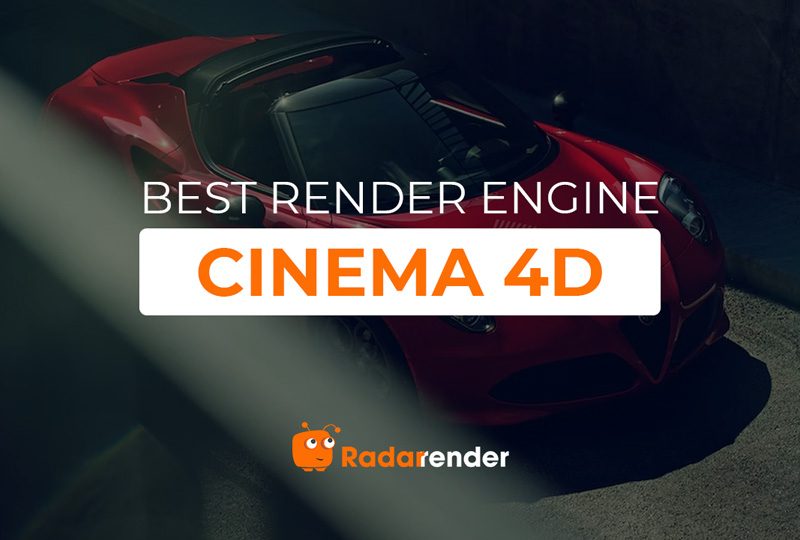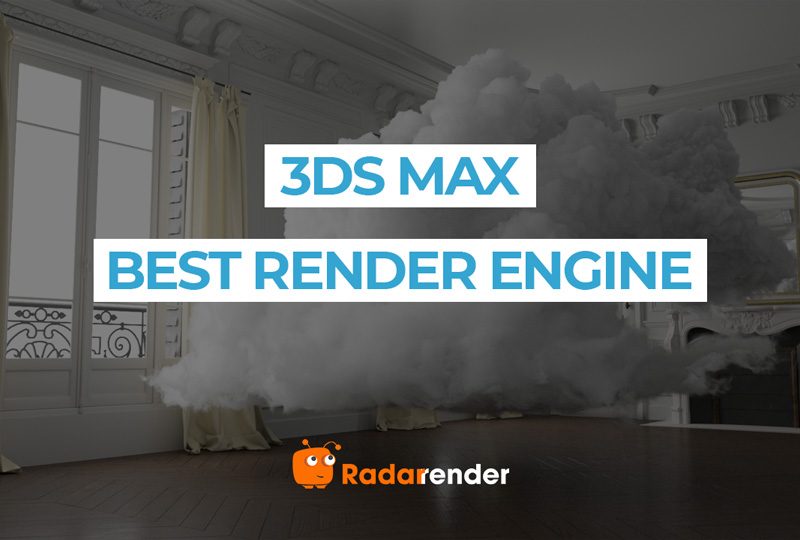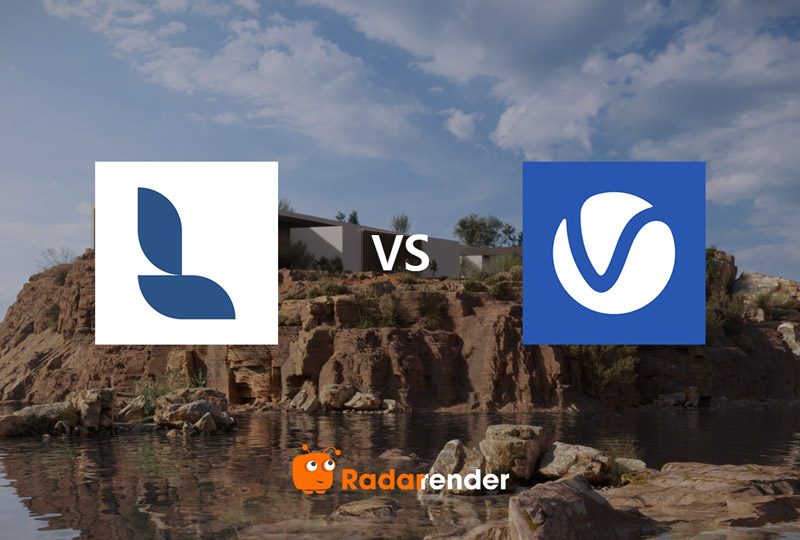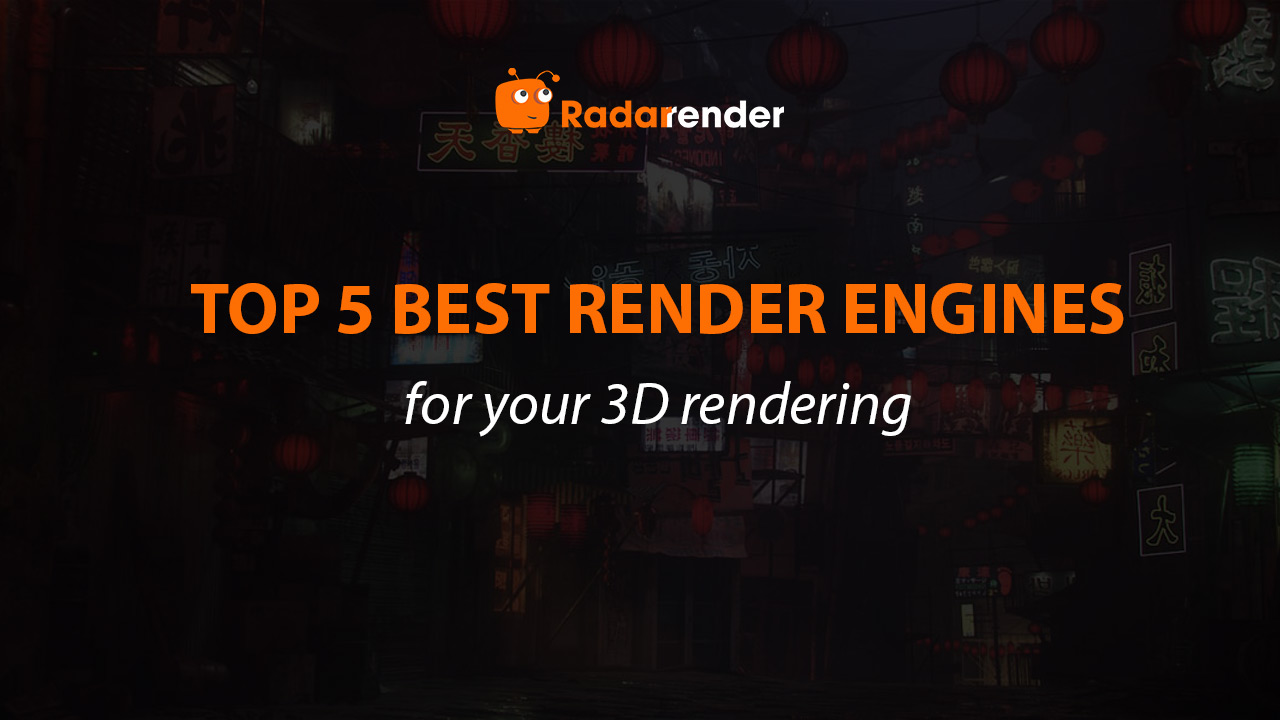
Top 5 best render engines for your 3D rendering
As a professional or beginner 3D artist, you may know that the render engine you select will have a big impact on your output quality, render times, and overall creative flexibility, regardless of whether you’re working in animation, visual effects, architecture visualization, or game development. We’ll examine the top 5 best render engines of 2025 in this blog post. Let’s dive deeper into this blog to find your suitable render engine!
Key factors for considering the render engines
Before we get into the top 5 list, here are some important factors you should consider when choosing the right render engine for your workflow:
- Compatibility & Integration: The render engine should work seamlessly with your main 3D software (like Blender, Maya, or Cinema 4D) and integrate well with the rest of your pipeline, including tools for modeling, texturing, and compositing.
- Render Speed & Performance: Consider whether the engine is optimized for CPU, GPU, or both. Speed is crucial, especially for large or complex scenes, and some engines even offer real-time or near real-time rendering capabilities.
- Output Quality: High-quality results depend on support for advanced rendering features like global illumination, subsurface scattering, volumetrics, and caustics. Choose an engine that meets the level of realism or stylization you aim for.
- Licensing & Cost: Render engines come with different pricing models; some are free and open-source, while others require subscriptions or one-time purchases.
- Feature Set: Look for engines that support physically-based rendering (PBR), node-based material systems and offer tools for lighting, post-processing, and effects to support a modern, efficient workflow.
- Ease of Use & Learning Resources: A user-friendly interface and availability of learning resources like tutorials, forums, and documentation can make a big difference, especially if you’re just starting or trying something new.
- Hardware & Platform Support: Ensure the engine supports your operating system (Windows, macOS, or Linux) and can fully utilize your hardware, such as modern GPUs or multi-core CPUs, to maximize performance.
Top 5 best render engines for your 3D projects
1. V-Ray
Chaos V-Ray is a powerful 3D rendering plugin compatible with many leading design platforms. It delivers highly realistic rendering capabilities on both CPU and GPU, making it a go-to choice in industries like product visualization, architecture, and film.
V-Ray integrates effortlessly with popular software such as 3ds Max, Cinema 4D, Houdini, Maya, Nuke, Revit, Rhino, SketchUp, and Unreal, allowing you to turn your 3D scenes into stunning visuals directly within your preferred application.
Here are some key features of V-Ray
- Both CPU and hybrid rendering solutions are available in V-Ray.
- It provides a range of tools to aid in post-production, visualization, and 3D rendering.
- Numerous designs, CAD programs, and other Chaos products and services can be used with the 3D rendering plugin Chaos V-Ray.
- Visual effects, animation, architecture, interior design, automotive, fashion and apparel, product design, and many other industries are supported by V-Ray.
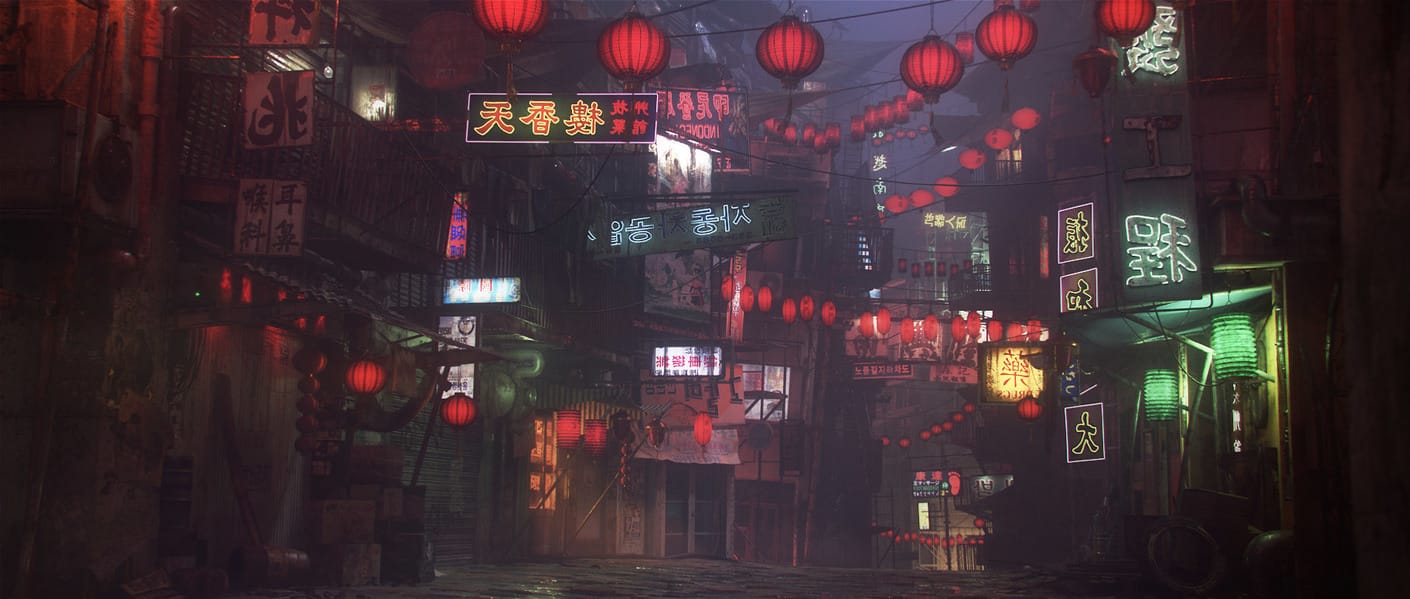 Boulon by Florent Duport using V-Ray for 3ds Max
Boulon by Florent Duport using V-Ray for 3ds Max
Source: chaos.com
Advantages
- V-Ray is known for photorealistic rendering, with accurate lighting, materials, and textures.
- Works across various industries like architecture, animation, VFX, product design, etc.
- Compatible with major 3D programs like 3ds Max, Maya, SketchUp, Rhino, Blender, Revit, and more.
- Offers deep control over materials, lights, cameras, and rendering parameters for professionals.
- Supports distributed rendering to speed up production using multiple machines.
- Tons of tutorials, forums, and resources are available to learn and troubleshoot.
Disadvantages
- Beginners may find it complex due to the many settings and technical depth.
- Demands powerful hardware for efficient rendering, especially for large scenes.
- Subscription/license fees of VRay Premium can be expensive for freelancers or small studios.
- Depending on the settings and scene complexity, it can be time-consuming, even on good machines.
- Unlike real-time engines like Unreal or Lumion, V-Ray still relies on traditional rendering, though V-Ray GPU and V-Ray Vision help close that gap.
2. Octane Render
Octane Render is one of the best render engines for Cinema 4D available today, enabling photorealistic rendering with incredible speed and efficiency.
OctaneRender is the world’s first and fastest unbiased, spectrally accurate GPU rendering engine, offering unmatched quality and speed compared to any other production renderer available.
Octane Render is a plugin for various DCC applications like 3ds Max, Maya, and Cinema 4D. It fully utilizes GPU power for rendering, meaning the speed of your renders depends on the capabilities of GPUs, rather than the CPU.
Highlight feature of Octane
- OctaneRender leverages GPU-powered rendering, delivering much faster performance compared to CPU-based renderers.
- It simulates light and materials with physical accuracy, producing highly realistic, unbiased renders.
- The software features a node-based material editor, making it easy for users to create complex and customizable materials.
- OctaneRender integrates smoothly with major 3D software like Blender, Cinema 4D, Maya, Houdini, and others.
- It supports spectral rendering and precise scattering simulations for even more lifelike results.
- The renderer also offers Open Shading Language (OSL) and custom node scripting, providing technical artists with full control over shading behavior.
- With its built-in AI denoiser, OctaneRender reduces noise, enabling faster, cleaner results.
- Supporting network and cloud rendering, allowing users to distribute render tasks across multiple machines or utilize cloud-based services for rendering.

scene by Artur Szymczak using Octane Render
Source: home.otoy.com
Advantages
- Capabilities for real-time rendering, excellent, lifelike outcomes.
- By lowering noise in rendered images, Octane’s AI-based denoising methods improve overall quality and enable faster convergence during rendering.
- Faster rendering thanks to support for NVIDIA RTX ray tracing.
- Because Octane integrates easily with a number of industry-standard programs, users can integrate it into the workflows they like for creating 3D content.
Weaknesses
- Requires powerful hardware for optimal performance.
- It is primarily a GPU-based renderer, so it doesn’t utilize CPU power effectively.
3. Redshift
Besides Octane Render, Redshift is also considered a well-known render engine for Cinema 4D. Redshift is a high-performance 3D rendering software designed to bring your 3D models, animations, and scenes to life. By simulating realistic lighting, materials, and effects, it turns your designs into stunning, high-quality images or animations. Thanks to its GPU-accelerated engine, Redshift delivers photorealistic results with faster feedback and shorter render times.
It also integrates effortlessly with Cinema 4D, as well as other major software like Autodesk Maya, SideFX Houdini, Foundry Katana, and Blender.
Key features of Redshift Render
- Redshift 2025.4 brings OpenPBR support, simplifying the creation of photorealistic materials across different rendering engines.
- By harnessing the power of your GPU, Redshift offers rapid render times, enabling quick and efficient iterations.
- It also integrates seamlessly with leading 3D applications like Cinema 4D, ensuring smooth and fast data exchange.

The Muppets Mayhem by Penny Nederlander using Redshift
Source: maxon.net
Advantages
- Redshift is a GPU-accelerated biased renderer, which means it renders much faster than CPU-based engines while still achieving high-quality results.
- It delivers film-level photorealistic renders, suitable for visual effects, animation, and high-end design work.
- Because it’s biased, users can tweak render settings for better speed or quality, depending on the needs of the project.
- Redshift works smoothly with tools like Cinema 4D, Maya, Houdini, Blender, Katana, 3ds Max, and more.
- Redshift uses out-of-core rendering, meaning it can handle large scenes by managing textures and geometry more efficiently than many GPU renderers.
- Includes volumetrics, subsurface scattering (SSS), motion blur, depth of field, AOVs, and more.
Disadvantages of Redshift
- Redshift is a commercial product with a recurring cost (subscription model), which might not suit hobbyists or indie creators.
- Since Redshift is not fully unbiased, achieving the perfect physical realism may require more manual tweaking than renderers like Octane or Arnold.
4. Cycles
Blender is a widely recognized name in the world of 3D, and Cycles stands out as the top rendering engine for its users. Cycles is Blender’s physically-based path tracer, built specifically for production rendering. It delivers realistic results by default while offering artists creative control and a versatile system of shading nodes to meet production demands.
It supports both CPU and GPU rendering and is tightly integrated within Blender, making it an excellent all-in-one solution for indie developers, hobbyists, and professionals alike.
Main features of Cycles
- Cycles is a physically-based path tracer that produces realistic lighting, reflections, and shadows using ray tracing.
- It supports both CPU and GPU rendering, including multi-GPU setups and compatibility with NVIDIA OptiX and AMD HIP.
- The engine features a real-time interactive viewport, allowing artists to preview lighting and materials as they work.
- Cycles includes advanced features like global illumination, subsurface scattering, volumetrics, motion blur, and caustics.
- It offers built-in denoising, adaptive sampling, and render passes, all within Blender’s free and open-source platform.

Evening Randevous by tomtrli using Cycles
Source: blenderartists.org
Advantages
- Free and open-source.
- Cycles is seamlessly integrated into Blender, allowing for a smooth workflow within the Blender environment.
- Because Cycles is based on a physically-based rendering approach, it works well for producing realistic and natural-looking lighting and materials.
- Both beginners and professionals can use Blender Cycles with ease.
Disadvantages
- Achieving noise-free renders in Cycles may take longer or require denoising techniques, particularly in scenes with complex lighting conditions.
- While Cycles is optimized for Blender, its integration with other 3D software might not be as smooth as that of some other rendering engines.
5. Arnold
Autodesk Arnold is a sophisticated Monte Carlo ray tracing renderer designed to produce stunning and consistent results. Its straightforward and user-friendly controls make it easy to use, allowing artists to create high-quality, professional renders with complete control over every aspect of their work.
Additionally, Arnold’s interactive rendering provides immediate results, allowing for a more efficient and responsive creative workflow. It can be used for 3ds Max, Cinema4D, Houdini, Katana, and Maya.
Highlighted features of Arnold
- With physically-based and unbiased rendering, Arnold delivers photorealistic results with accurate light simulation and realistic shading.
- It is tightly integrated into Maya, Houdini, 3ds Max, Cinema 4D, and Katana, making it ideal for studio pipelines.
- Arnold efficiently handles large-scale scenes with heavy geometry and textures, making it a go-to for film and VFX.
- Its node-based system allows for deep customization of materials, lights, and procedural effects.
- Arnold includes powerful denoising tools and flexible render passes (AOVs), streamlining the compositing process.

Frosty – 2019 Version by LF GFX using Maya and Arnold
Source: area.autodesk.com
Advantages
- Arnold is renowned for its superior rendering skills, which include superb lighting and shading techniques that produce realistic and eye-catching results.
- Professionals use Arnold since it is extensively utilized in the field and is compatible with prominent 3D animation programs like Autodesk Maya.
- incorporated with well-known 3D programs like Cinema 4D and Maya.
Disadvantages
- Due to its advanced features and capabilities, Arnold may present a steeper learning curve for beginners or those new to rendering software.
- It has slower rendering times compared to GPU-based renderers.
Conclusion
Choosing the right render engine for your renderings is crucial to creating realistic, high-quality results. However, the right renderer also depends on your specific needs, workflow, and creative goals. Whether you prioritize speed, realism, flexibility, or accessibility, each of the top five engines, Octane, Redshift, V-Ray, Arnold, and Cycles, has its own strengths. Hopefully, my article can help you find the right renderer for you!
Related posts



